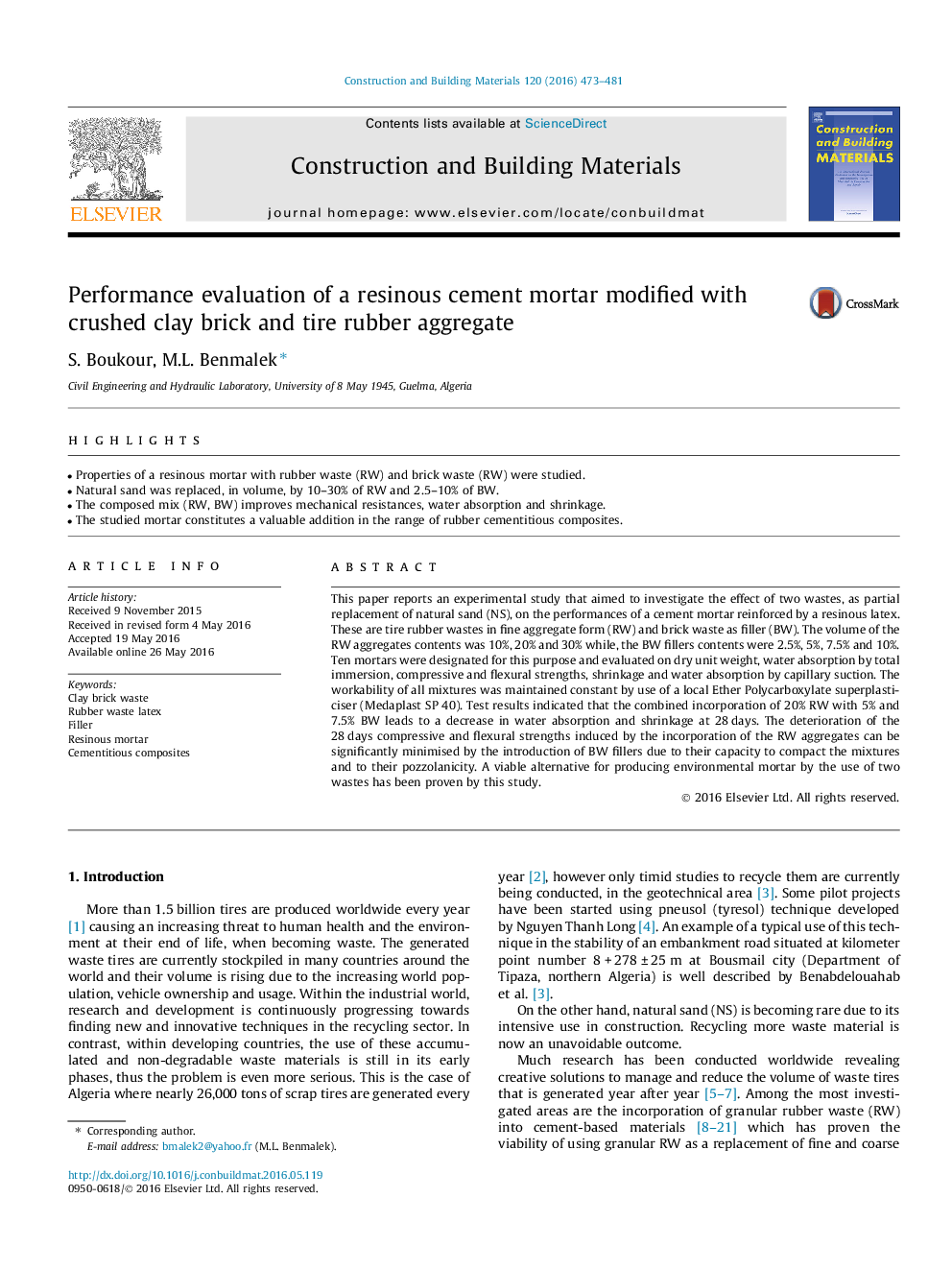| Article ID | Journal | Published Year | Pages | File Type |
|---|---|---|---|---|
| 255858 | Construction and Building Materials | 2016 | 9 Pages |
•Properties of a resinous mortar with rubber waste (RW) and brick waste (RW) were studied.•Natural sand was replaced, in volume, by 10–30% of RW and 2.5–10% of BW.•The composed mix (RW, BW) improves mechanical resistances, water absorption and shrinkage.•The studied mortar constitutes a valuable addition in the range of rubber cementitious composites.
This paper reports an experimental study that aimed to investigate the effect of two wastes, as partial replacement of natural sand (NS), on the performances of a cement mortar reinforced by a resinous latex. These are tire rubber wastes in fine aggregate form (RW) and brick waste as filler (BW). The volume of the RW aggregates contents was 10%, 20% and 30% while, the BW fillers contents were 2.5%, 5%, 7.5% and 10%. Ten mortars were designated for this purpose and evaluated on dry unit weight, water absorption by total immersion, compressive and flexural strengths, shrinkage and water absorption by capillary suction. The workability of all mixtures was maintained constant by use of a local Ether Polycarboxylate superplasticiser (Medaplast SP 40). Test results indicated that the combined incorporation of 20% RW with 5% and 7.5% BW leads to a decrease in water absorption and shrinkage at 28 days. The deterioration of the 28 days compressive and flexural strengths induced by the incorporation of the RW aggregates can be significantly minimised by the introduction of BW fillers due to their capacity to compact the mixtures and to their pozzolanicity. A viable alternative for producing environmental mortar by the use of two wastes has been proven by this study.
